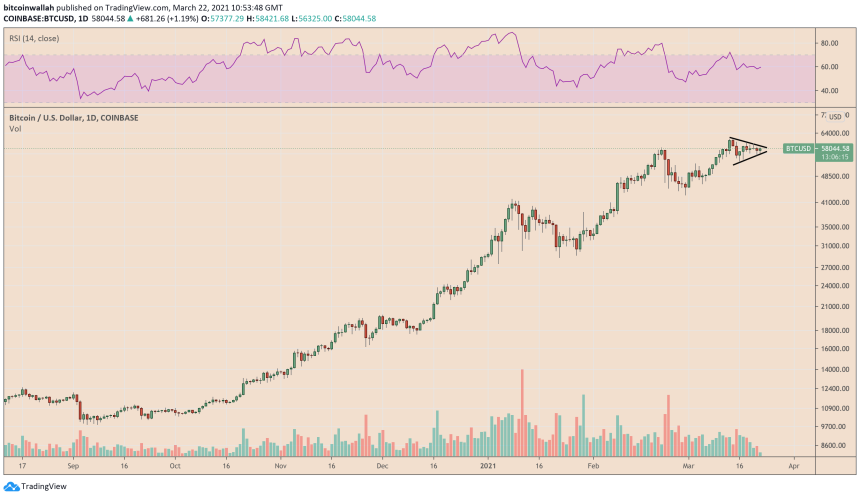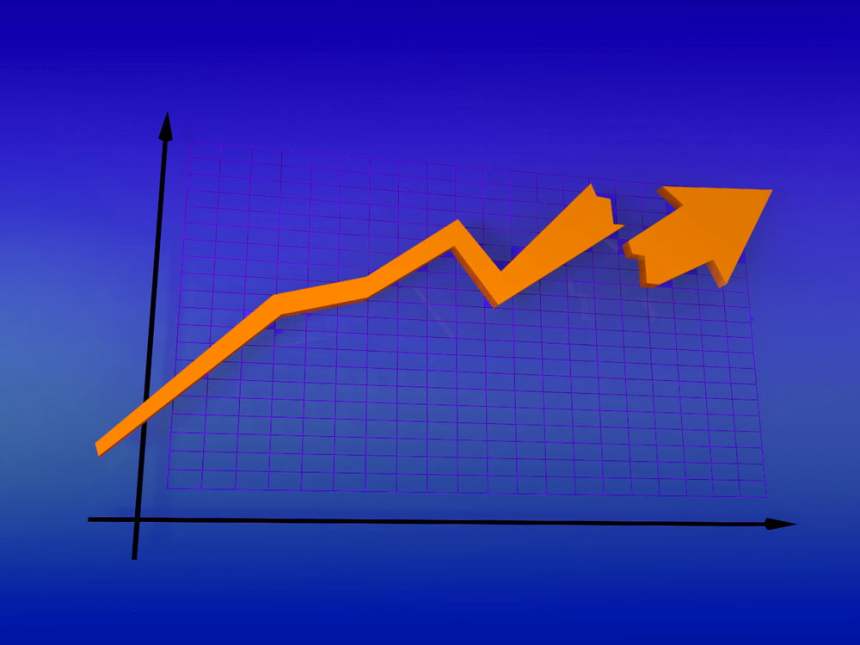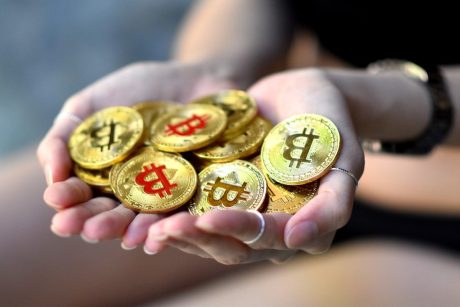Bitcoin has struggled to capitalize on its recent bull run above $61,000 as traders continue to assess the impact of rising US bond yields on the cryptocurrency market. And now, with markets anticipating further interest rate growth in the 10-year Treasury note, an overvalued BTC/USD exchange rate is clueless about where to head next.
The pair has fallen by up to 13.87 percent from its record high of $61,788 (data from Coinbase) in the same period that saw the 10-year note yields achieving their 14-month high of 1.726 percent. The narrative is simple: investors have sold longer-dated government bonds en masse to seek opportunities in sectors that would benefit the most after the economy reopens, including energy and travel.

In turn, they reduced their exposure in markets that performed extremely well during the coronavirus pandemic, including technology stocks and bitcoin. Doubts emerged over their rallies’ longevity against the prospect of faster-than-expected economic growth in the US.
Bitcoin was still able to post a record high as more institutions showed interest in its potential to act as a hedge against inflation. Corporates, including Tesla, Square, and MicroStrategy, added the cryptocurrency to their balance sheets as an alternative to their cash reserves.
Meanwhile, Mastercard, Bank of New York Mellon, PayPal, Goldman Sachs, and Morgan Stanley launched or announced that they would integrate new bitcoin-enabled services into their traditional platforms, creating more pathways for rich investors to gain exposure in the cryptocurrency market.
Rising bond yields appear to be among the few headwinds before Bitcoin as the latter attempts to rally further higher. If interest rate returns on Treasurys rise, it would most likely strengthen the US dollar’s purchasing power, affecting Bitcoin, which boasts itself as an anti-fiat asset.
Nonetheless, the real question is: would the policymakers intervene if the yields rise above 2 percent? One macroeconomic expert thinks yes.
Expect Intervention
In an interview with Kitco, Chantelle Schieven, head of research at Murrenbeeld & Co, noted that the Federal Reserve would “jawbone the markets” if the yields rise above 2 percent. She stated the US central bank could start laying out a broad framework for capping interest rate returns on bonds. Nevertheless, it would take more Fed meetings before they reveal the easing forward guidance.
Ms. Schieven’s comments appeared ahead of the central bank officials meeting on Tuesday and Wednesday last week. Fed chair Jerome Powell stated that they would keep their benchmark rates near zero until 2024 or until they achieve a sustainable inflation rate above 2 percent and maximum employment in a follow-up press conference.
Mr. Powell did not provide any guidance on how the Fed would tackle the rising yields on the longer-dated Treasuries. That prompted Ms. Schieven to expect more closed-door meetings between the central bank officials before they reach a strategy to tackle the bond market sell-off.
“The central bank is in a very precarious situation, so they won’t be too quick to act one way or another, but you know there are going to be a lot of interesting closed-door discussions about the rise in bond yields,” she said.
Bitcoin Uncertain, Not Bearish
The comments pointed towards a period of potential uncertainty for safe-haven assets, including Bitcoin and gold. It appeared that the rising yields could put a cap on the cryptocurrency’s and the precious metal’s growth, expectation of Fed’s intervention would also limit their declines throughout 2021.
Ms. Schieven stressed that investors should focus on real interest rates, which expect to remain in negative territory against a growing inflation threat.
Therefore, even a yield rise above 2 percent could prompt investors and traders to hold Bitcoin, providing the cryptocurrency a backstop for its next potential bull run.



















